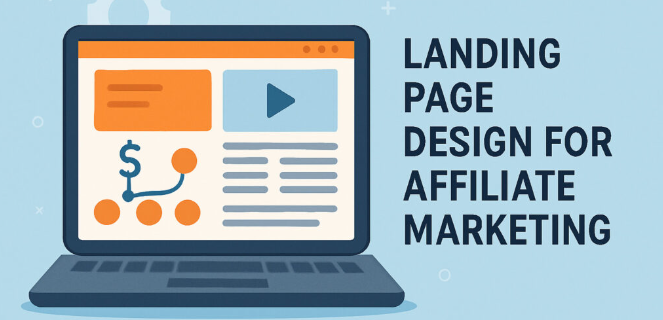If you’re new to affiliate marketing, the first thing you should learn how to do is build a high-converting affiliate landing page. Your landing page is the middleman between your traffic and affiliate commissions. But how do you create one that converts?
In this step-by-step, beginner’s guide, you’ll discover the best tips and tricks to make top-performing, SEO-optimized affiliate landing pages that generate clicks and sales, even if you’re a complete newbie.
What Is an Affiliate Landing Page?
An affiliate landing page is a single web page dedicated to the promotion of a particular product or promotion. Unlike content pages or blog posts, this page serves one purpose: get people to click your affiliate link and buy or sign up.
Whether you’re selling a product on Amazon, ClickBank, or another affiliate network, your landing page needs to:
Grab attention
Build trust
Clearly present the offer
Add a compelling call to action (CTA)
Why Your Affiliate Landing Page is Important
Most newbies just put affiliate links on blog posts and wait for orders to come. That’s an error. Having a specific landing page gives you the opportunity to:
Make message and storytelling more controlled
Optimize for conversions
Effectively run paid traffic (e.g., Facebook Ads, Google Ads)
Create email lists and remarket to users down the line
Top Affiliate Landing Page Hints and Secrets for Beginners
Understand Your Target Market
Before you create your landing page, establish:Who is your audience?
What are their pain points?
What benefits are they seeking?
Tip: Leverage tools like Google Trends, AnswerThePublic, or Reddit to investigate actual user queries and behavior.
Make the Design Simple and Direct
- Utilize less design to maintain visitors on track.
- Eliminate unnecessary distractions (sidebars, multiple links, etc.)
- Employ a lot of white space and mobile-friendly layouts
Trick: Design with tools such as Carrd, Systeme.io, or Elementor for easy landing page creation.
Craft a Killer Headline
Your users first see your headline. Make it:
- Clear
- Benefit-driven
- Problem-solving
Example:
“Discover the #1 Tool to Grow Your Email List 5X Faster”
SEO Tip: Place your main keyword in the headline and subheadings.
Utilize High-Quality Visuals
Product photos, demo videos, or explainer GIFs can enhance trust.
Add before-after photos if applicable.
Add badges, reviews, or testimonials for social proof.
Trick: Use Canva to create stunning visuals even if you’re not a designer.
Include Strong Call-To-Action (CTA)
Your CTA should be:
Visible
Actionable
Urgent
Examples:
- “Get Instant Access Now”
- “Try It Risk-Free Today”
- “Claim Your 7-Day Free Trial”
Trick: Use contrasting colors for buttons to make them stand out.
Use SEO Best Practices
For free (organic) traffic, follow these SEO guidelines:
Use keyword-rich titles and meta descriptions
Add alt text to images
Use H1, H2, H3 hierarchy correctly
Make page speed speedy (use tools such as GTmetrix or PageSpeed Insights)
SEO Tip: Target long-tail keywords such as “best email marketing tool for bloggers” rather than short ones.
Add Testimonials and Reviews
People trust people. If you can add:
- User testimonials
- Star ratings
- Influencer endorsements
…it can significantly boost conversions.
Trick: If you don’t have testimonials, display review screenshots on Amazon, TrustPilot, or YouTube.
Apply Scarcity and Urgency (Ethically)
FOMO (Fear of Missing Out) is effective. Add:
- Limited-time offers
- Countdown timers
- Limited stock notifications
Example:
“Only 7 Licenses Remaining – Offer Expires in 2 Hours!”
Tool Tip: Apply plugins such as Hurrytimer or Thrive Ultimatum.
Split Test (A/B Testing)
You don’t have to get it right the first time.
- Test various:
- Headlines
- Images
- CTA buttons
- Color schemes
Tool Tip: Apply Google Optimize, ConvertKit, or Systeme.io for A/B testing.
Capture Emails for Follow-Up
Even if they don’t purchase on the spot, gather their emails for follow-up.
- Free ebook
- Discount code
- Checklist or cheat sheet
Tool Tip: Leverage free email tools like MailerLite or GetResponse.

